Research
 Because North Carolina is in the transition zone, both warm- and cool-season grasses can be grown in our state. However, cool-season grasses get severely stressed during our hot and humid summer months, and warm-season grasses can suffer significant winterkill during cold winters. Therefore, a big emphasis of our program is to improve cold-tolerance in warm-season grasses and heat and drought tolerance in cool-season grasses. Currently, we have ongoing research projects in tall fescue, bermuda, St. Augustine, Zoysia and centipedegrass.
Because North Carolina is in the transition zone, both warm- and cool-season grasses can be grown in our state. However, cool-season grasses get severely stressed during our hot and humid summer months, and warm-season grasses can suffer significant winterkill during cold winters. Therefore, a big emphasis of our program is to improve cold-tolerance in warm-season grasses and heat and drought tolerance in cool-season grasses. Currently, we have ongoing research projects in tall fescue, bermuda, St. Augustine, Zoysia and centipedegrass.
One of the main areas of interest in our program is the combination of modern technologies with conventional methods for turfgrass improvement. Molecular markers, tissue culture, flow cytometry, chromosome doubling with colchicine, linkage and QTL mapping, and mutagenesis are some of the methods we are currently applying. The following list -though not all-inclusive- is a good representation of the width of projects we are presently working on.
ST. AUGUSTINEGRASS
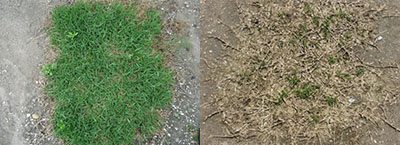 Breeding for cold tolerance:
Breeding for cold tolerance:
St. Augustinegrass is a desirable turfgrass because of its shade tolerance and relatively low input requirements, but it has poor cold tolerance. Our goal is to increase this grass’ adaptability area by improving its cold tolerance. This project includes multiple aspects including a diallel study to understand more about the heritability of the trait, the use of freezing tests in the laboratory to elucidate the physiological aspects of cold tolerance and to develop better screening methodologies, histological preparations to improve our understanding of how different tissues in the node respond to freezing, and field evaluations in the mountains of North Carolina where higher elevations allow for better selection pressure.
 Mapping QTL for cold tolerance:
Mapping QTL for cold tolerance:
SSR and AFLP markers were used in a pseudo-F2 population of Raleigh x Seville to build the first complete linkage map of St. Augustinegrass. The map has been used to identify specific regions of Raleigh’s genome that control cold tolerance. Our ultimate goal is to develop more efficient selection methods to breed for this trait.
 Evaluation of germplasm for pest resistance:
Evaluation of germplasm for pest resistance:
Our St. germplasm collection has been screened for gray leaf spot and chinch bug resistance. GLS screenings were conducted under controlled environmental conditions in the NCSU phytotron. Diploid accessions with high levels of resistance to the fungus have been identified. The chinch bug resistance work was conducted by the Cardoza lab in the entomology department. St. Augustinegrass accessions that sustain less damage and that hinder chinch bug reproduction have been identified.
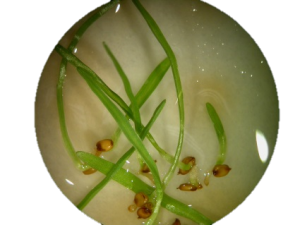 Chromosome doubling using colchicine:
Chromosome doubling using colchicine:
Polyploid genotypes of St. Augustinegrass are more resistant against several biotics stresses such as pests and pathogens (insects, nematodes, virus, and diseases). Exploitation of this variation has been slow due to the complications in crossing genotypes of different ploidy levels. We are working to develop artificial tetraploid lines that could be used as bridge genotypes for crosses with polyploids of interest. Seedlings recovered after treatment are screened for genome size changes using flow cytometry and later corroborated through chromosome counts. Stable tetraploid seedlings have been recovered from one of these lines.
 Mapping QTL for gray leaf spot resistance:
Mapping QTL for gray leaf spot resistance:
Genetic linkage maps of St. Augustinegrass have been constructed for quantitative trait loci (QTL) analysis of resistance to gray leaf spot using a total of 125 SSR and 225 AFLP markers on a pseudo F2 population of 77 progeny. Six putative QTL were identified through interval and composite interval mapping. These results represent the first linkage map produced for St. Augustinegrass, which provides a template for further genetic mapping.
ZOYSIAGRASS
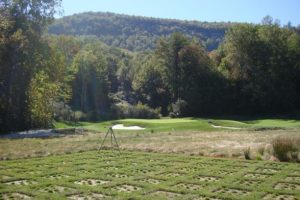 Breeding for cold tolerance:
Breeding for cold tolerance:
Our Zoysiagrass germplasm collection has been evaluated for cold tolerance at two locations in the mountains of North Carolina. Materials with superior cold tolerance and faster establishment rates were advanced to replicated trials. Additionally, these lines will be tested under controlled environmental conditions.
 Understanding levels of speciation within Zoysia spp.:
Understanding levels of speciation within Zoysia spp.:
Understanding the population structure present within Zoysia germplasm can assist plant breeders in exploiting available variation. The objectives of this study were to assess simple sequence repeat (SSR) allelic diversity within and among Zoysia spp., evaluate the genetic constitution of putative interspecific hybrids, and determine if Zoysia spp. and hybrids can be differentiated by inflorescence traits.
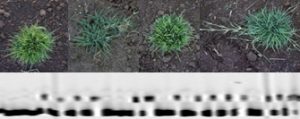 Mapping QTL for cold tolerance
Mapping QTL for cold tolerance
Zoysiagrass is a warm season turfgrass that is desirable for its low input demands and general tolerance to abiotic stresses. However, use of zoysiagrass is limited because of its relative lack of cold tolerance compared to cool season grasses. The identification of quantitative trait loci (QTL) for cold tolerance would improve effective breeding for the trait. Simple sequence repeat (SSR) markers are currently being identified in a pseudo-F2 population to construct a linkage map, which will be used to identify QTL associated with cold tolerance. This mapping population is being evaluated for winter injury at three locations with various degrees of winter pressure.
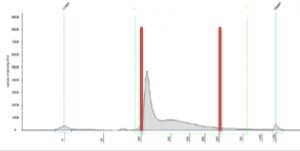 Genotyping by Sequencing for marker discovery:
Genotyping by Sequencing for marker discovery:
Next generation sequencing platforms allow for robust and inexpensive discovery of new markers. We are using genotyping-by-sequencing methods and Illumina sequencing technology to target non-repetitive regions of the zoysiagrass genome and identify high volumes of single nucleotide polymorphism (SNP) markers. These techniques and the adapters designed specifically for use in turfgrasses will be used for rapid SNP discovery in other turfgrass species in our lab.
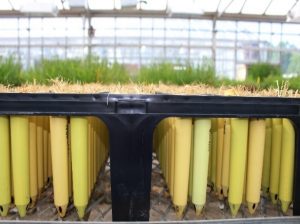 Proteomics of Cold Acclimation:
Proteomics of Cold Acclimation:
The physiological changes that occur during the cold acclimation period are influential on a plant’s winter survival. Better understanding these physiological changes can shed light on phenotypic traits useful in the breeding of more cold tolerant varieties of warm-season grasses. Using acclimation and freezing chambers for simulated cold events and mass spectrometry for protein analysis, different zoysia genotypes are being evaluated for protein accumulation during the acclimation and freezing process.
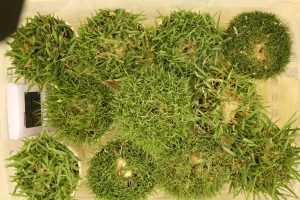 Evaluation of zoysiagrass germplasm for large patch resistance:
Evaluation of zoysiagrass germplasm for large patch resistance:
Our zoysiagrass germplasm collection is currently being evaluated for large patch resistance under controlled environmental conditions in the NCSU phytotron. A few lines with superior resistance to local isolates of the fungus have been identified. Additional evaluations with more virulent isolates are underway.
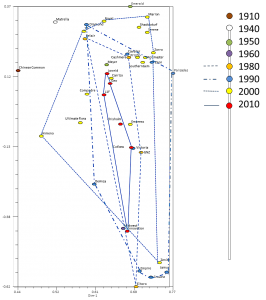 Understanding levels of genetic diversity in Zoysiagrass using SSR markers:
Understanding levels of genetic diversity in Zoysiagrass using SSR markers:
We’re analyzing levels of allelic diversity at the gene and population levels in Zoysia cultivars released between 1910 and 2016. Simple sequence repeat (SSR) markers are being used to determine whether allelic diversity over has changed among these cultivars. This study will help elucidate the influence a century of science-based plant breeding has had in zoysiagrass breeding. Knowing these effects will help maintain or renew efforts to increase genetic diversity in this economically important turfgrass species.
BERMUDAGRASS
 Breeding for shade tolerance:
Breeding for shade tolerance:
Bermudagrass is one of the most commonly grown turfgrasses in North Carolina. The grass is extremely drought tolerant which makes it a very desirable species especially under new demands for water allocation. However, bermudagrass lacks shade tolerance, a valuable trait for use in smaller residential landscapes where trees are dominant, as is the case in many neighborhoods in NC. A set of nine bermudagrass accessions collected from South Africa have been evaluated for their ability to perform well under low light conditions. The top performers will be used in crosses to develop populations that segregate for shade and cold tolerance among other traits of interest.
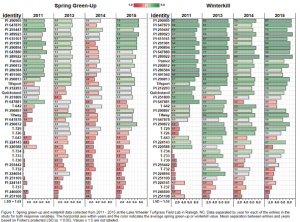 Breeding for cold tolerance:
Breeding for cold tolerance:
Forty African and common bermudagrass accessions were established in a replicated field trial to determine variability in cold tolerance. The field evaluation was followed with controlled freeze chamber experiments developed to more efficiently screen materials in the future. Based on these results, we identified high cold tolerance among African bermudagrass entries. These entries are being used in crossing blocks with the shade tolerant common bermudagrass accessions. The resulting hybrids will be evaluated in hopes of identifying shade and cold tolerant genotypes.
CENTIPEDEGRASS
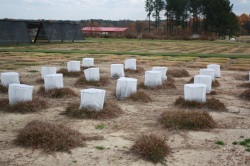 Mutation breeding in centipedegrass:
Mutation breeding in centipedegrass:
The goal of this project is to generate morphological and stress tolerance variation through the use of a chemical mutagen. A total of 3000 M1 progenies have been planted at the Sandhills Research Station and are currently under evaluation for aggressiveness, genetic color, and leaf texture, among other traits.
SPECIALTY CROPS RESEARCH INITIATIVE (SCRI)
 This is a coordinated project among five universities in the southeast (University of Florida, Texas A&M University, Oklahoma State University, University of Georgia and North Carolina State University) to jointly develop and evaluate cultivars of seashore paspalum, bermuda, zoysia and St. Augustinegrass with improved drought and salinity tolerance. Breeding materials are crossed-evaluated at seven locations in NC, FL, GA, OK and TX.
This is a coordinated project among five universities in the southeast (University of Florida, Texas A&M University, Oklahoma State University, University of Georgia and North Carolina State University) to jointly develop and evaluate cultivars of seashore paspalum, bermuda, zoysia and St. Augustinegrass with improved drought and salinity tolerance. Breeding materials are crossed-evaluated at seven locations in NC, FL, GA, OK and TX.
TALL FESCUE
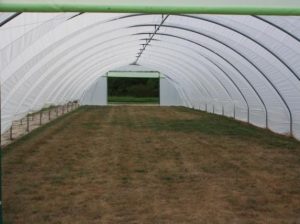 Breeding for heat and drought tolerance:
Breeding for heat and drought tolerance:
Recurrent phenotypic selection is being used to improve heat and drought tolerance in tall fescue. Plots are maintained under a rain-out shelter at the Sandhills Research Station (Jackson Springs, NC) where sandy soils allow for severe drought conditions. Plots are subjected to drought during the hottest summer months. Surviving plants are then selected and allowed to cross-pollinate to generate new populations for selection. Several cycles of recurrent selection are conducted. After this time, populations are evaluated in replicated trials.